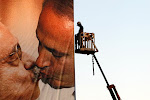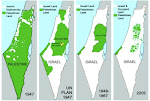Secret Sale of Bunker-buster Bombs Revealed
Timing is everything in politics and in war. What do you make of this? The news of the sale of 1000 US mini-bunker busters to Israel was broken by Tim Butcher of London's Daily Telegraph three years ago. Today, as Abbas makes his case for statehood at the United Nations, the story reemerges on the net. (Perhaps it got lost in the blizzard of American presidential election coverage at the time.)
While publicly pressuring Israel to make deeper concessions to the Palestinians, President Obama has secretly authorized significant new aid to the Israeli military that includes the sale of 55 deep-penetrating bombs known as bunker busters, according to the Daily Beast.
U.S. and Israeli officials tell Newsweek that the GBU-28 Hard Target Penetrators—potentially useful in any future military strike against Iranian nuclear sites—were delivered to Israel in 2009, just several months after Obama took office.The military sale was arranged behind the scenes as Obama’s demands for Israel to stop building settlements in disputed territories were fraying political relations between the two countries in public.
The Israelis first requested the bunker busters in 2005, only to be rebuffed by the Bush administration. At the time, the Pentagon had frozen almost all U.S.-Israeli joint defense projects out of concern that Israel was transferring advanced military technology to China.























